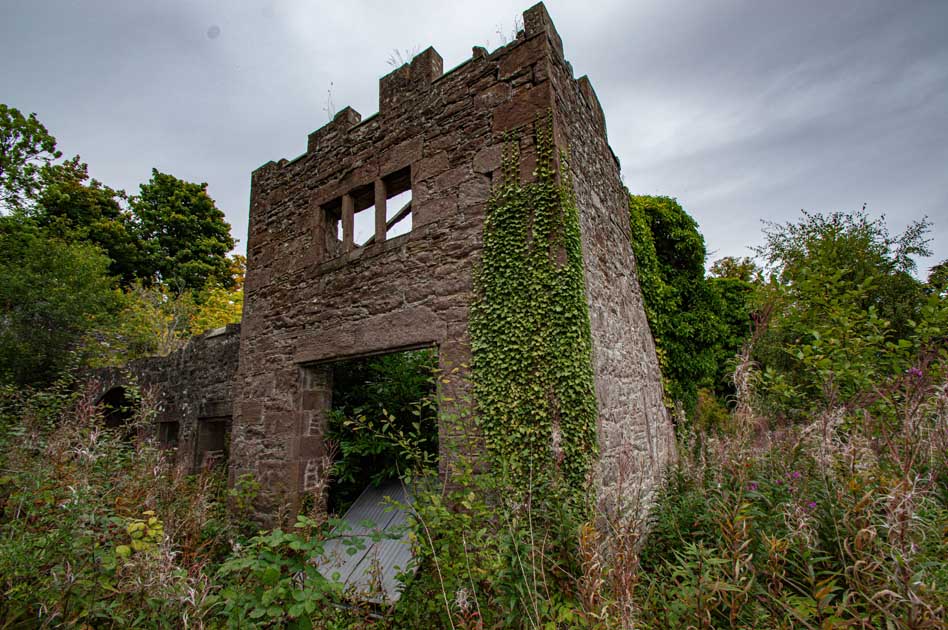Ballumbie Castle

Ballumbie Castle Details
Ballumbie Castle, ruined C16 castle of unusual design. Built by the Lovells but ruined by 1682. Fenced off for safety
- Closest To: Dundee
- Access: S.O.A.C. Public Access
- Grid Reference: NO445344
Ballumbie Castle is a massively overgrown ruined courtyard set on high ground overlooking a ravine containing the Fithie Burn. It is an unusual building, but is set behind safety fencing as it is considered unsafe.
The lands of Ballumbie appear to have been held by the Lovell family from at least thestart of the 15th century, possibly having relocated there after the Wars of Independence, when their barony of Hawick was claimed by the Douglases – or else the Angus Lovells were a separate line, but there is no indication that there was a castle at Ballumbie until the mid 16th century. James Lovell was listed as an Angus lord who fought at Harlaw in 1411, Richard Lovell of Ballumbie witnessed a document of 1426, and in 1463 Richard Lovell and his wife received a grant of the lands of Murroes from the Earl of Crawford. Richard was followed by his son Alexander, and Alexander by his son Henry, who was knighted, and should have been succeeded by his son Andrew, and then by Andrew’s son, another Henry. However, a charter of 1551 shows that Henry was in fact passed over by his father, who instead issued his grandson John as his heir. In 1572, Henry junior and his son John were both charged with non-appearance at court, and Henry was denounced as a rebel, his son named as “fiar” of Ballumbie. In an interesting document, John is recorded as having suffered “unnaturall wrangis and injureis” at the hands of his father, and was forced to complain to the Privy Council about him in 1567!
By this time the castle had been built, it is usually dated to 1545, and believed to have been a quadrangular courtyard castle with round towers at the corners, as two corners survive with a connecting length of wall, and a second stretch on one side. However this is not what is depicted on Pont’s map of c1595-1600, about when the estate had been acquired by Patrick Lord Gray and purchased by James Elphinstone, Lord Balmerino. This shows a sizeable residence, double gabled with a central gate, and a projecting wing to the rear. Perhaps this building stood on the western side, as this side of the ruin is much altered.
The second Lord Balmerino sold the estate to the earl of Panmure, and in 1662 George was served heir to his deceased father in the superiority of Ballumbie. In 1674 it was sold or assigned to James Maule, the brother of the third earl, and who succeeded to the earldom in 1686. It is generally believed that the castle was in ruins by this point, and a new house was built – but not until 1810. The western side of the castle ruin has slightly projecting square portions of walling, reminiscent of an artillery fort, and there are ruins of buildings leaning up on all sides of the courtyard; a blocked up gateway is in the centre of the western side – all this is more modern and may date to use as a stable block after the house was built nearby.
Become a supporter of my work to access a more detailed history